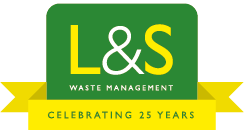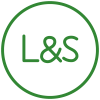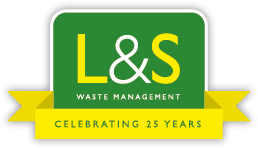Your team’s comfort starts here.
Hazardous waste includes a wide range of materials, which present a threat to both humans and the environment. When disposing of this type of waste, it’s important that you seek professional help from a specialist waste company and do not attempt to handle or dispose of the material yourself.
In this blog we identify the different kinds of hazardous waste you might encounter, and highlight why they are dangerous and how they should be disposed of.
Types of hazardous waste:
Explosive
Waste which presents an explosion hazard. For example, fireworks. These can cause serious harm if not handled or disposed of correctly. Explosive waste may also include chemicals or fuel tanks found during demolition.
Incineration or detonation is a common method of disposal, but this must be carried out professionally to avoid injury.
Oxidising
Oxidising materials can contribute to the combustion of surrounding materials when exposed to heat or a source of ignition. Chemicals, bleach and other oxidising agents, which you’d find in a laboratory or hospital, can contribute to a fire, causing it to grow and spread faster. Some items, for example, oxygen tanks, can also be an explosive hazard.
Store oxidising chemicals away from other combustible items, and contact a licensed waste carrier to ensure they are handled, transported and disposed of safely.
Flammable
Items which will combust when they reach a certain temperature. Flammable waste typically refers to flammable liquids. These are most commonly found in commercial or industrial premises, and include items such as fuels, solvents and oils.
To ensure that flammable liquids are safely disposed of, store used liquid containers and fuels away from other combustible items, label them clearly, and contact a licensed waste carrier to correctly transport and dispose of them away from your property.
Irritants
Any non-corrosive materials which can cause damage and irritation to the skin or eyes if you come into contact with them. These might include items such as solvents, cleaning products, acids, detergents, paints or adhesives.
An irritant should be clearly labelled on the packaging, so avoid contact with your skin when using any of these products. Do not dispose of irritants down the drain. Instead, contact a hazardous waste disposal company to ensure they are disposed of in the most environmentally friendly manner possible.
Toxic
In general, toxic waste refers to substances which, when inhaled or ingested, can cause severe, often fatal, damage. Pesticides, acids, clinical waste, solvents, paints, vehicle oils and battery fluid are all examples of toxic waste.
Toxic chemicals and substances should be treated with extreme caution, and should be disposed of with care by licenced hazardous waste carriers.
Corrosive
Corrosive substances can not only eat away and erode living tissue, but can also damage structural materials such as concrete or metal frameworks. Acids are corrosive and should be treated with caution at all times.
Disposal should be handled by trained professionals. Attempting to pour corrosive substances down the drain, or dumping them in the rubbish bin, can lead to extensive damage to the local environment.
Carcinogenic
Substances which present a cancer risk when inhaled or ingested regularly or in large doses.
Asbestos is one of the most common carcinogenic waste materials. When faced with an asbestos-containing material during construction, renovation or demolition works, great care should be taken not to disturb the material.
An assessment will need to be carried out, and a hazardous waste removal company should be contacted in order to safely dispose of the identified carcinogenic asbestos waste.
DO NOT PLACE ASBESTOS INTO A SKIP HIRED FOR NORMAL CONSTRUCTION / INDUSTRIAL / COMMERCIAL WASTE.
If you are unsure about Asbestos, what it is and its correct disposal route contact us directly.
More information on hazardous waste
Above are some of the most common classifications of hazardous waste. However, others do exist so it helps to be fully aware of rarer materials so you can properly prepare when it comes to storing, handling and disposing of them.
If you’re in need of a hazardous waste clearance service then L&S Waste can help.
We ensure all hazardous materials are handled and disposed of in a safe and legal manner, ensuring all work is carried out in full accordance with the Hazardous Waste Regulations.
Company Bio
Find out why L&S is no ordinary waste management company.
Go >
L&S In The Community
Learn more about our community projects.
Go >
Meet The Team
An introduction to the L&S management.
Go >












